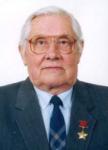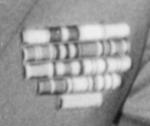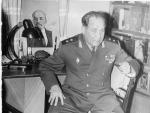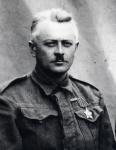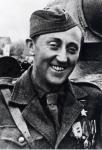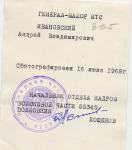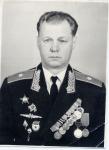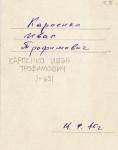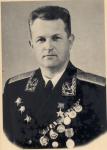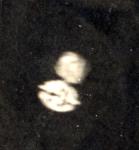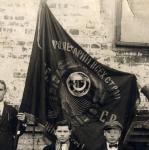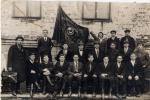-
Posts
14,343 -
Joined
-
Last visited
-
Days Won
25
Content Type
Profiles
Forums
Blogs
Gallery
Events
Store
Everything posted by Ed_Haynes
-

Great War medal bar question?
Ed_Haynes replied to coldstream's topic in Great Britain: Orders, Gallantry, Campaign Medals
Interesting. -- No WWII war medal. Makes one wonder if the 1939-45 Star was self-awarded? A possible, but unlikely set. -- The final uniform-coloured ribbon would have been used to hold a mention-in-despatches device or, as seems more likely given the group, a King's Commendation for Brave Conduct (rather a rare beast), though this would often have been added onto the Defence Medal. Nice. -

Mongolia The First Mongolian Medals in My Collection
Ed_Haynes replied to Riley1965's topic in People's Republic Mongolia
To date, the lowest number that has been recorded for the Medal "We Won" is 111. Personally, the lowest number I have is 904 in the group to Lieutenant-General Damdin Tserenjav. You also may want to glance at http://gmic.co.uk/index.php?showtopic=10216&st=01 for information on this and the other Battushig "A" medals. -

Soviet medals medals EVERYWHERE!
Ed_Haynes replied to paddywhack's topic in Russia: Soviet: Other Militaria
Good point. But I think his suit is long lost anyway on the left side, why not trash the right too? Seems to be still living? -

Czechoslovakia Czech (?) medal
Ed_Haynes replied to Ed_Haynes's topic in Central & Eastern European States
Thanks. -

Soviet medals medals EVERYWHERE!
Ed_Haynes replied to paddywhack's topic in Russia: Soviet: Other Militaria
This may be but this is a nasty machine translation of his bio on that site. So probably NOT him in your photo. -

Soviet Now, where did I hide the bottle?
Ed_Haynes replied to Ed_Haynes's topic in Russia: Soviet: Other Militaria
-
Thanks, Marc. For more on him, see http://www.warheroes.ru/hero/hero.asp?Hero_id=7303 The nasty/computer translation of his bio divulges:
-

Soviet Now, where did I hide the bottle?
Ed_Haynes replied to Ed_Haynes's topic in Russia: Soviet: Other Militaria
-

Soviet Now, where did I hide the bottle?
Ed_Haynes replied to Ed_Haynes's topic in Russia: Soviet: Other Militaria
I also find this interesting in showing the sorts of tchotchkes that could infest the Soviet workspace. -

Soviet Now, where did I hide the bottle?
Ed_Haynes posted a topic in Russia: Soviet: Other Militaria
-

Poland Czechosolvaika: Antonin (?) Sochor
Ed_Haynes posted a topic in Central & Eastern European States
Another Czech HSU, 21 December 1943 (medal #2854). A nasty translation of http://www.warheroes.ru/hero/hero.asp?Hero_id=1553 -
ID confirmation needed on what I thinbk is the Czechoslovak Medal for 20th Anniversary of Slovak Uprising of 1944. See: http://gmic.co.uk/index.php?showtopic=7532...88879&st=35
-
-
An interesting photo of the Friendship Medal in wear (by a Soviet friend). He also seems to be wearing the Czechoslovak Medal for 20th Anniversary of Slovak Uprising of 1944?
-
-
A well decorated Soviet officer with what seems to be the Korean Liberation Commemorative Medal (Choson Haepang Kinyom Chang).
-

Soviet Some early pictures, RCW-era
Ed_Haynes replied to Ed_Haynes's topic in Russia: Soviet: Other Militaria
-

Soviet Some early pictures, RCW-era
Ed_Haynes replied to Ed_Haynes's topic in Russia: Soviet: Other Militaria
-

Soviet Some early pictures, RCW-era
Ed_Haynes replied to Ed_Haynes's topic in Russia: Soviet: Other Militaria
Does the banner tell us anything? (Other that the obvious exhortation as to what the workers of the world ought to be doing.) -

Soviet Some early pictures, RCW-era
Ed_Haynes replied to Ed_Haynes's topic in Russia: Soviet: Other Militaria
One more interesting group photo. At least I think it is interesting and says much about the era. All boys, just the one girl. -

Soviet medals medals EVERYWHERE!
Ed_Haynes replied to paddywhack's topic in Russia: Soviet: Other Militaria
There were also a lot of late GPW awards. -
Please post what you have. A shame there is (and probably never will be) any archival conformation.
-

Got they Money?
Ed_Haynes replied to Alex K's topic in Great Britain: Orders, Gallantry, Campaign Medals
In this period, I think, the tinsel star would still be the normal award and you could have a metal star made (which, of course, your family would not need to return). -

Got they Money?
Ed_Haynes replied to Alex K's topic in Great Britain: Orders, Gallantry, Campaign Medals
If awarded to an Indian royal (or their extended family), the families were allowed to purchase the badge at cost. It is not clear whether this policy was ever explained to London. Likewise, anyone who still had the breast badge in 1917 was supposed to have the badge converted or could purchase (at cost) a new neck badge (and this neck badge would the one that would be returned). When the CSI was created (along with the KCSI) in 1866 (five years after the order had been creasted as a single-class "great order" along the lines of the Garter, Thistle, or St. Patrick), it was limited to just 100 members at any time, half Indians and half Euroipeans (and half those Europeans had to be reasiding in England, so the order would have some "home visibility"). While these numbers would expand modestly over time (to 225 total by 1939 when the war meant that issues like this would be ignored and awards would be relaxed -- the flood gates would open -- for the war years, there could be 10 civil CSIs per year and 2 military awards), the clear intent was for this to remain an exclusive order (with the CIE added as a less exclusive single-class low order in 1877 and sprouting the higher classes in 1886 and 1887). After independence, the High Commission gave up on the policy of retrieving awards to Indian recipients on their deaths, while they continued to retrieve (and destroy) awards to Europeans.



